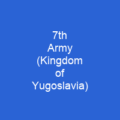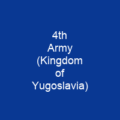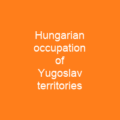The 1st Cavalry Division of the Royal Yugoslav Army was established in 1921. It was part of the Yugoslav 1st Army Group during the German-led World War II Axis invasion of Yugoslavia in April 1941. The divisional headquarters and all attached units were captured by armed Croat fifth column groups, or surrendered to German troops.
About 1st Cavalry Division (Kingdom of Yugoslavia) in brief

The 1st cavalry brigade was the only cavalry brigade in the Yugoslav Army during the Second World War. The German 14th Panzer Division captured the division on 10 April 1941, with the rest of the division being detached for duty with other formations of the 1stArmy Group. The army was formed around the nucleus of the victorious Royal Serbian Army, as well as armed formations raised in regions formerly controlled by Austria-Hungary. Many former Austro-Hungarian officers and soldiers became members of the new army. In 1929, King Alexander changed the name of the country to the Kingdom of Yugoslavia, at which time the army was renamed the Royal Yugoslavia Army. From the beginning, much like other aspects of public life in the new kingdom, theArmy was dominated by ethnic Serbs, who saw it as a means by which to secure political hegemony for the large Serb minority. The weaknesses of the VKJ in strategy, structure, equipment, mobility and supply were exacerbated by serious ethnic disunity within Yugoslavia, resulting from two decades of Serb hegemony.
You want to know more about 1st Cavalry Division (Kingdom of Yugoslavia)?
This page is based on the article 1st Cavalry Division (Kingdom of Yugoslavia) published in Wikipedia (as of Dec. 08, 2020) and was automatically summarized using artificial intelligence.







